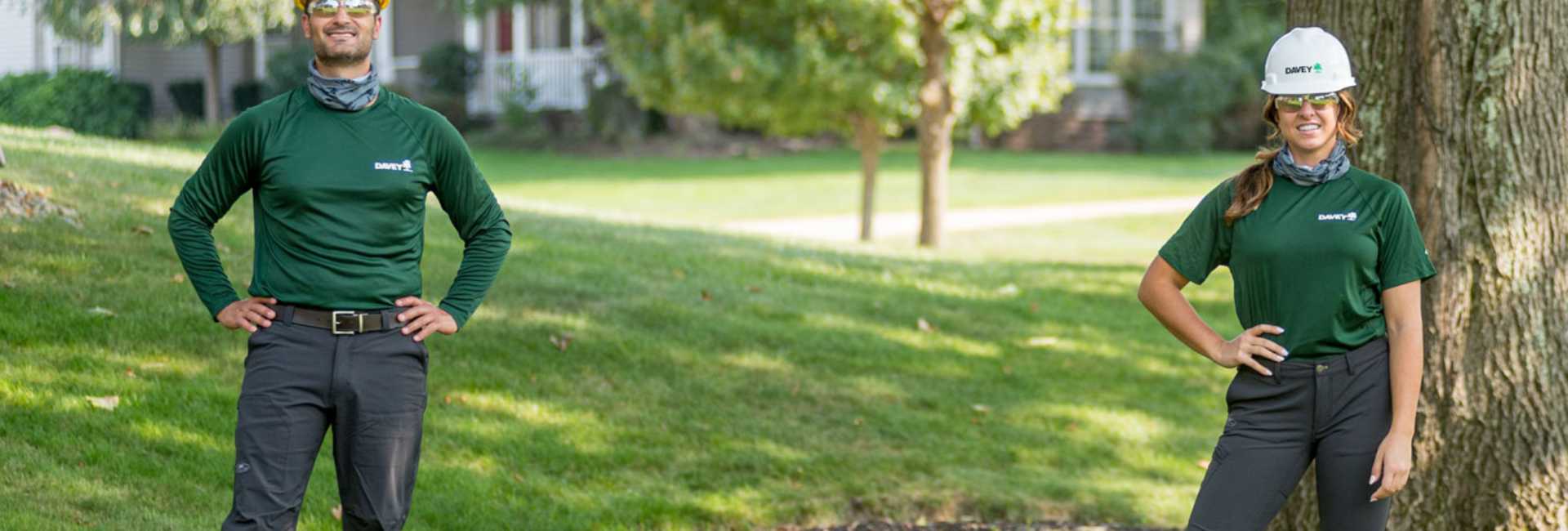In this Palo Alto article, George Reno from Davey's Menlo Park office shares advice on how to manage mildew on your trees' and shrubs' leaves.
Right about now, you may start to notice a powdery substance covering the leaves on your trees and shrubs – most likely, this is mildew. Our region has endured long-term drought, followed by wetter winters and variable humidity. The extremes of this roller-coaster weather ride can stress trees and make them less able to fend off diseases, including fungal threats. While powdery mildew can appear throughout the year, it is most common during the late summer and early fall when the days are warm and the nights are cool, creating favorable conditions for its development and spread.

Leaves with brown or tan spots are another sign of a common fungal infection called anthracnose.
These spots are typically more noticeable in late spring and early summer.
Powdery mildew and anthracnose are found on a wide variety of trees and shrubs: Peninsula maples and dogwoods are among the trees on the Peninsula that often struggle with these common fungal diseases.
These fungal infections won’t usually kill mature trees, but it can weaken them. It is more serious for young trees and shrubs and annuals, like garden vegetables, and can cause severe leaf and branch loss.
Understanding why these diseases thrive locally, and how to manage them, can save your trees.
To continue reading George's article, click here.
For more information, contact the Menlo Park office.
The Davey Tree Expert Company, headquartered in Kent, Ohio, provides research-driven tree services, grounds maintenance and environmental and utility infrastructure consulting for residential, utility, commercial and environmental partners in the U.S. and Canada. As one of the top ten largest employee-owned companies in the U.S., Davey's 12,000 employees have been dedicated to creating and delivering sustainable solutions since 1880. Apply today to join the Davey legacy, and learn about how we're growing with our new SEED Campus.





